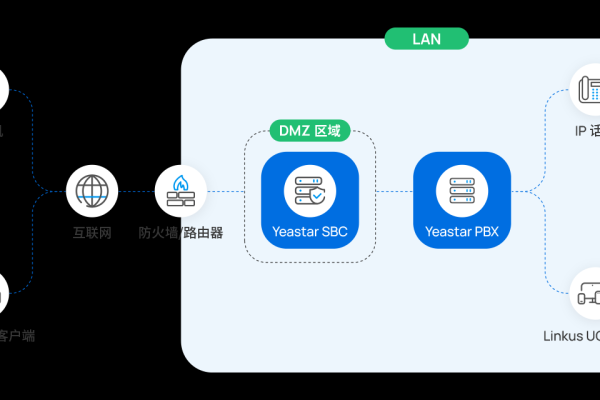如何实现VPS的内网映射?
- 行业动态
- 2024-10-31
- 3526
VPS内网映射的实现方法
在现代网络环境中,内网映射(又称端口映射或NAT映射)是一种将外部网络与内部网络指定端口进行映射的方法,通过内网映射,可以实现从外部网络访问内部网络的服务或应用,本文将详细介绍几种常见的内网映射工具及其实现步骤,包括ngrok、花生壳和公云等。
二、内网映射概述
内网映射,即端口映射(Port Forwarding),是一种将外部网络与内部网络的指定端口进行映射的方法,通过内网映射,可以实现从外部网络访问内部网络的服务或应用,当用户在外网时,可以通过特定的域名或IP地址访问内网中的Web服务器、文件共享服务或其他应用。
三、常见内网映射工具及实现步骤
1. ngrok
1.1 下载与安装
访问[ngrok官网](https://ngrok.com/download)下载适合自己操作系统的版本。
解压下载的文件,得到一个名为ngrok的应用程序。
1.2 运行与测试
双击运行ngrok,输入ngrok http 8080并按回车(假设本地服务运行在8080端口)。
成功后,ngrok会分配一个外网可访问的域名,并在命令行中显示“online”状态。
打开浏览器,输入该域名,即可访问本地服务。
1.3 注意事项
ngrok操作简单且免费,但连接可能较慢且不稳定。
每次退出后重新连接,分配的域名可能会变化,如需固定域名,需注册ngrok账号并获取token码进行配置。
2. 花生壳
2.1 下载与安装
访问[花生壳官网](http://hsk.oray.com/download/)下载客户端。
安装并打开客户端,按照提示注册账号并登录。
2.2 配置与测试
登录后,客户端会自动分配一个免费域名。
右键点击域名,选择“花生壳管理”,打开新页面。
点击“内网映射”,添加映射规则,设置应用名称和内网主机IP。
确认无误后,点击“保存”。
启动内网服务(如Tomcat),并在浏览器中输入映射后的外网访问地址进行测试。
2.3 注意事项
花生壳操作简便,但部分功能需付费使用。
需进行实名认证才能使用全部功能。
3. 公云
3.1 购买与注册
访问[公云官网](http://www.pubyun.com/p/carg/),注册账号并购买内网穿透套餐(有免费版可选)。
3.2 配置与测试
登录后,点击左侧“内网域名”,进入内网域名管理界面。
填好内网端口后,点击“添加”。
启动内网服务,并在浏览器中输入公云提供的外网访问地址进行测试。
3.3 注意事项
公云提供多种套餐选择,满足不同用户需求。
免费版可能有功能限制或广告。
4. 路由器端口映射(以TPLINK为例)
4.1 登录路由器管理界面
在浏览器地址栏输入192.168.1.1(或路由器背面标注的管理地址),输入用户名和密码(默认均为admin)登录。
4.2 配置端口映射
找到“转发规则”>“虚拟服务器”选项。
点击“添加新条目”,填写内网服务器的IP地址、端口号以及协议类型(TCP/UDP/TCP+UDP)。
保存设置并重启路由器(如果需要)。
4.3 测试与访问
在路由器管理界面查看公网IP地址。
在外网环境输入公网IP:端口格式的地址进行访问测试。
4.4 注意事项
确保内网服务器已开启且监听正确端口。
部分路由器可能需要更复杂的配置或固件升级支持端口映射功能。
内网映射是实现外部网络访问内部网络服务的重要技术手段,本文介绍了ngrok、花生壳、公云以及路由器端口映射四种常见的内网映射工具及其实现步骤,这些工具各有优缺点,用户可以根据自己的需求和网络环境选择合适的工具进行配置,随着网络安全技术的不断发展和完善,内网映射技术也将更加成熟和可靠,为更多用户提供便捷的远程访问解决方案。
各位小伙伴们,我刚刚为大家分享了有关“vps怎么做内网映射”的知识,希望对你们有所帮助。如果您还有其他相关问题需要解决,欢迎随时提出哦!
本站发布或转载的文章及图片均来自网络,其原创性以及文中表达的观点和判断不代表本站,有问题联系侵删!
本文链接:http://www.xixizhuji.com/fuzhu/81549.html


